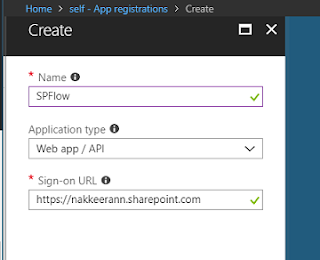Let us see how the Office 365 SharePoint library images are analyzed
using Microsoft Flow and Azure Cognitive Service. By analyzing the images, we
can classify the images. Also, we can extract the image description, tags or
taxonomy data of image, locations present on images, or even the image
categories.
Azure Cognitive service provides Computer Vision API, which
helps providing tools to understand the content of any images. Computer vision
API helps in classifying the image, identifying captions of image and even
image categorizations. Further API helps in recognizing celebrities and
landmarks, reading out text from images, analyzing video in real time and
generating thumbnails for the videos.
Computer vision API can be leveraged on multiple platforms. Microsoft
Flow is one such powerful platform, where we integrate computer vision API for
analyzing the images uploaded to SharePoint.
Use Case: Let us see how the images uploaded can be analyzed classified on SharePoint images library. At the end of article, you will know how the below image uploaded can be updated classification and description data.
